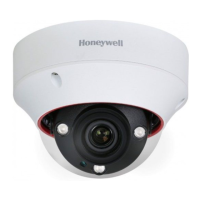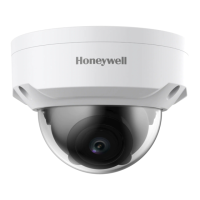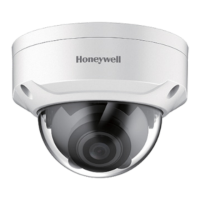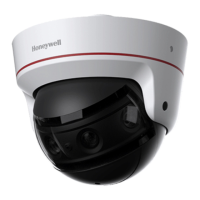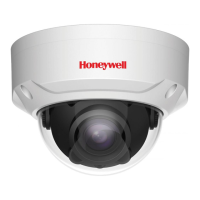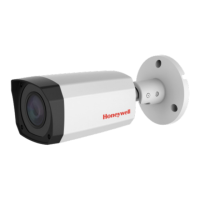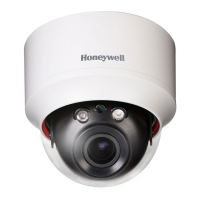
Do you have a question about the Honeywell H4W4PER3 and is the answer not in the manual?
| Model | H4W4PER3 |
|---|---|
| Series | Performance Series |
| Type | IP Camera |
| Resolution | 4 MP |
| Form Factor | Dome |
| Environment | Indoor/Outdoor |
| Night Vision | Yes |
| IR Distance | Up to 30m (98ft) |
| Weather Resistance | IP66 |
| Protection | IK10 Vandal Resistant |
| Power Supply | PoE (802.3af) |
| Operating Temperature | -30°C to 50°C (-22°F to 122°F) |
| Connectivity | Ethernet (RJ45) |
Summarizes instructions for safe installation and operation, covering warnings, power, heat, mounting, and servicing.
Information on how to contact customer service for assistance, warranty claims, or RMA numbers.
Explains the manual's purpose, target audience, and scope for Honeywell IP cameras.
Lists other relevant Honeywell documents and where to access them for camera installation.
Steps to install and run the necessary software for camera configuration.
How to use the Config Tool to locate IP cameras on the network.
Procedure for setting a static IP address for cameras via the Config Tool.
Instructions for updating camera firmware using the Config Tool, for single or multiple devices.
How to access the camera's web interface for detailed configuration.
Steps to access the camera's web interface, including prerequisites.
Guide to installing the necessary browser plugin for web client functionality.
Explanation of the camera's live view interface layout and controls.
How to use live monitoring controls like zoom, snapshot, and record.
Configuration of stream types (main/sub) and protocols (TCP/UDP/Multicast).
Procedure for safely exiting the camera's web interface.
Description of the layout and components of the video playback screen.
Explanation of buttons for playing, pausing, stopping, and navigating recorded video.
How to create, clip, and save video segments from recorded footage.
Understanding the timeline display for navigating recorded events by time and type.
Instructions for downloading complete video files or created clips.
How to view and download system-generated or manually captured snapshots.
Adjusting image settings like brightness, contrast, exposure, and white balance.
Setting up and switching between different camera profile configurations (e.g., Day, Night).
Adjusting optical zoom and focus manually or automatically for clarity.
Setting video encoding, resolution, frame rate, and bit rate for main and sub streams.
Defining snapshot frequency, image size, and type (general/event).
Customizing video with privacy masks, channel titles, and time stamps.
Defining specific areas within the video feed for enhanced monitoring or analysis.
Setting IP addresses, subnet masks, gateways, DNS, and ARP/Ping parameters.
Managing maximum simultaneous connections and port settings.
Enabling or disabling ONVIF authentication for interoperability.
Setting up Point-to-Point Protocol over Ethernet for internet connectivity.
Setting up Dynamic DNS for remote access with changing IP addresses.
Restricting network access to specific IP or MAC addresses.
Setting up email notifications for events, including SMTP server details and recipients.
Enabling Universal Plug and Play for automatic network device detection.
Setting up zero-configuration networking for device discovery.
Optimizing bandwidth for multiple clients receiving the same stream.
Implementing port-based network access control for security.
Prioritizing network traffic for live video and other data.
Installing and managing security certificates for secure connections.
Setting up daily and holiday schedules for recording and snapshots.
Defining storage paths for local SD card, FTP, or NAS.
Adjusting pack duration, pre-event recording, disk full behavior, and record mode.
Setting up motion detection parameters, working periods, and detection areas.
Detecting and responding to unauthorized camera tampering or defocus.
Detecting and responding to significant changes in the video scene.
Setting up notifications for SD card issues and network disconnections/conflicts.
Configuring alarm types, operations, and audio notifications for detected events.
Setting device name, language, video standard, and log quantity.
Setting and synchronizing the camera's date, time, and time zone.
Managing user accounts, groups, and permissions for system access.
Restoring the camera to its factory default settings.
Saving and loading camera settings for backup or transfer.
Setting up automatic reboots and old file deletion for system upkeep.
Procedure for updating the camera's firmware to the latest version.
Displaying firmware, web client, and ONVIF version details.
Viewing, backing up, and deleting system event and operation logs.
Monitoring currently connected users and their session details.


